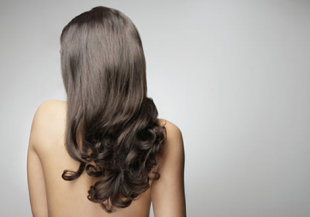 It is one of our most obvious features, and decades of studies are indicating the importance of the color of your locks. Your natural hair color has a lot to do with your health, current and future. It’s not just about choosing the right wardrobe, your hair color also has a lot to say about your health, which can help you to put some anti-aging tips into place before it’s too late. The common ties between a woman’s natural hair color and her chances of damage and developing diseases and disorders are discussed below.
It is one of our most obvious features, and decades of studies are indicating the importance of the color of your locks. Your natural hair color has a lot to do with your health, current and future. It’s not just about choosing the right wardrobe, your hair color also has a lot to say about your health, which can help you to put some anti-aging tips into place before it’s too late. The common ties between a woman’s natural hair color and her chances of damage and developing diseases and disorders are discussed below.Can Hair Color Lead to Damage Down the Line
Blondes
It is relatively common knowledge that those with fair hair (and skin) need to be especially careful for a variety of reasons. But add another one to the list: Potential for eye problems. If you are blonde, appropriate sunglasses are increasingly important. Shades with an appropriate UV block become of ultimate importance. Age related macular degeneration (which can cause blindness) affects blonde women more often. Harvard Health says that no matter your skin tone, blondes should never leave home without slathering on a full-spectrum UVA and UVB sunscreen. This is also one of the popularanti-aging tips that can mean big things for the prevention of cancer down the road, too.
Brunettes
According to the National Cancer Institute, with the exception of hair that is jet black, the darker your hair color the greater your chances of developing non-Hodgkin’s lymphoma (NHL). This occurs because women with dark hair often have a certain DNA coding that not only affects pigment, but increases the risk for this disease. But interestingly, black hair did not carry the increased risk like brunette hair did.
Redheads
Experts (from a 2009 Cleveland Clinic Study) say that those with red hair or light ginger locks tend to have a much lower pain tolerance. Redheads may require up to 20% more local anesthesia as a preventative for pain (Novocain or other, similar pain-numbing drugs) than other colors. This could be, in part, because a redheads melanocortin-1 receptors (aka: hair color DNA) are malfunctioning which can result in a lower tolerance to pain. Not only this, but those with red hair often require more general anesthesia than other hair colors.
It’s Not Just About Anti-Aging Tips and Preventing Damage – Aging Hair.
Silver or Grey
The common misconception is that your grey hair somehow changes things. Keep in mind that your genes don’t change as your hair goes grey. The DNA that decides your hair color when you are younger is in your chemical make-up, and that’s the same even as you start to notice those grey hairs. So look at your natural color when taking preventative measures. Experts do say that if you should keep a keen eye though, if you notice that your hair is going grey very quickly or far too early, this can be the sign of other health problems, so it is a good idea to go see your healthcare practitioner.

0 comments:
Post a Comment